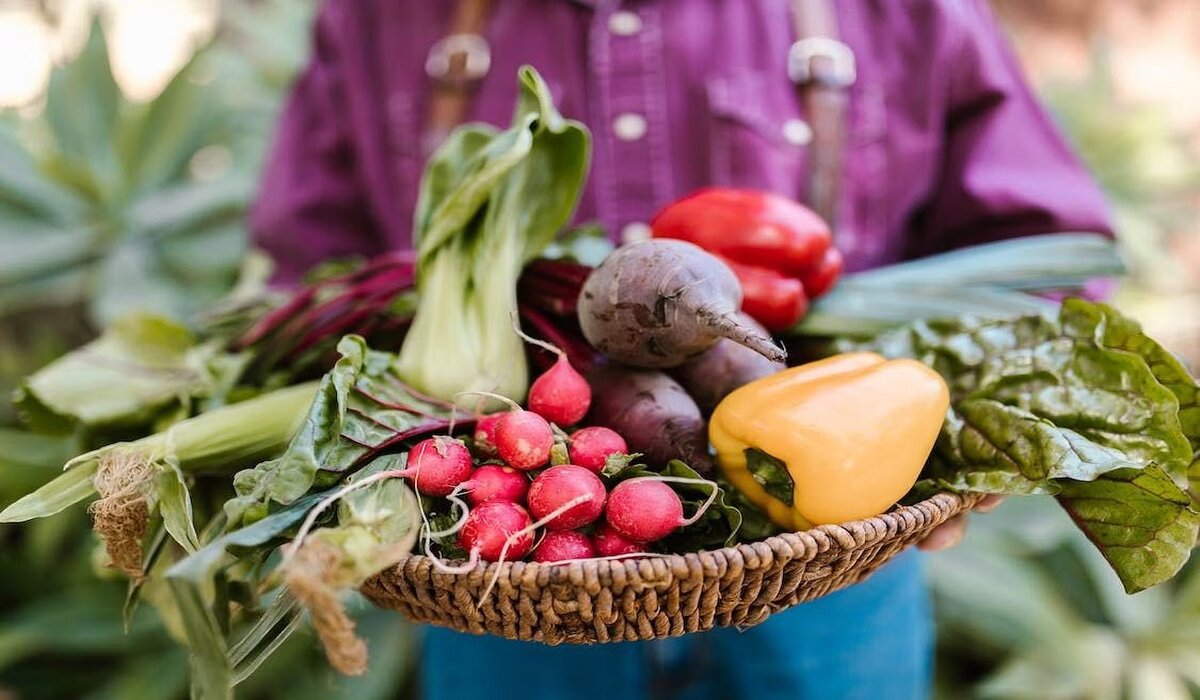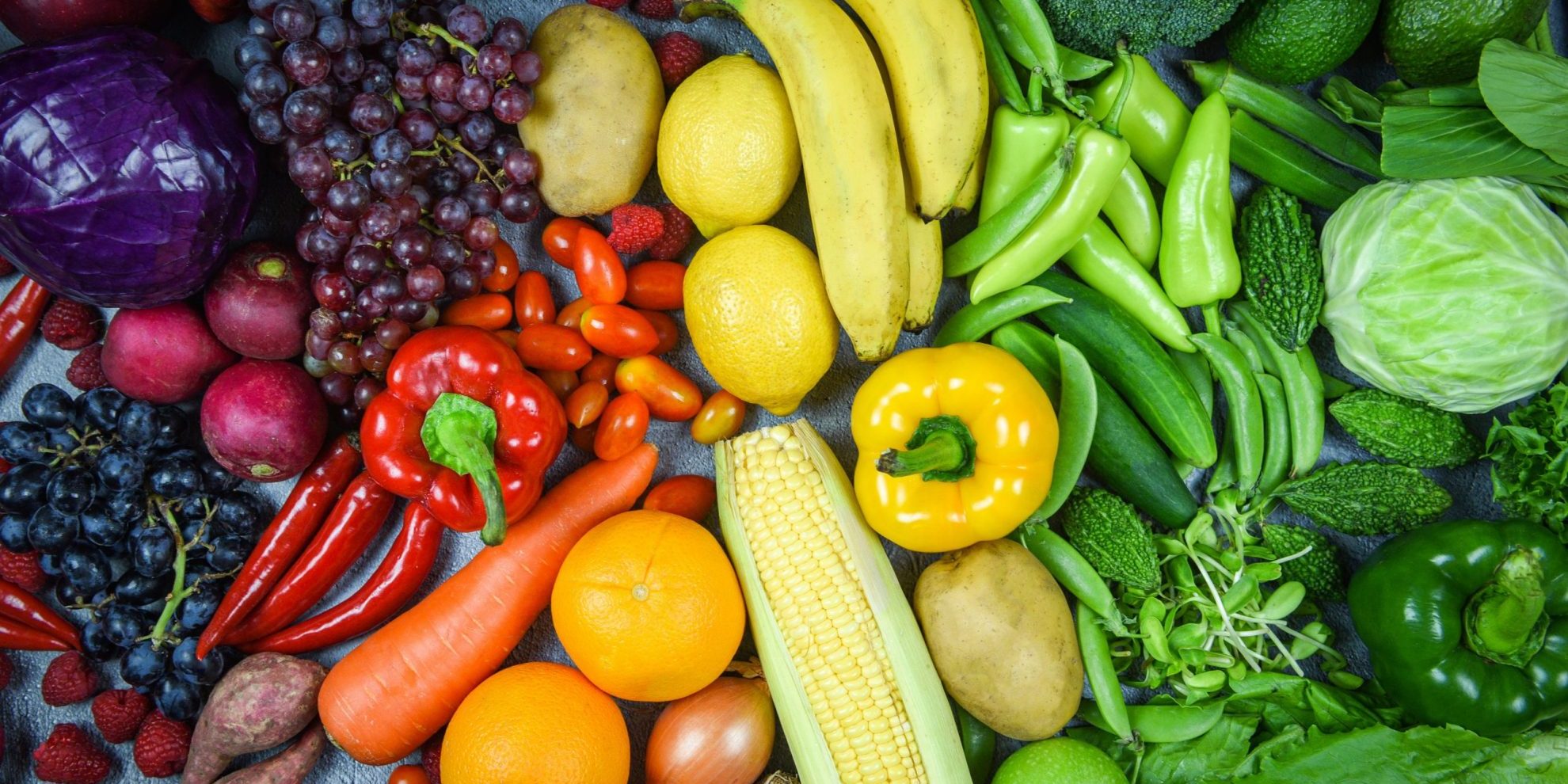Home>Gardening News and Trends>Latest News>Why Do I Hate Vegetables


Latest News
Why Do I Hate Vegetables
Modified: January 22, 2024
Discover the latest news and find out why so many people have an aversion to vegetables. Learn more about the reasons behind this common dislike and how to overcome it.
(Many of the links in this article redirect to a specific reviewed product. Your purchase of these products through affiliate links helps to generate commission for Chicagolandgardening.com, at no extra cost. Learn more)
Table of Contents
Introduction
Vegetables are an essential part of a healthy diet, packed with essential vitamins, minerals, and fiber. They provide numerous health benefits and are often recommended by nutritionists and healthcare professionals. However, despite their nutritional value, many people find themselves hating vegetables. The reasons for this aversion can vary from personal preferences and negative childhood experiences to sensory aversions and cultural factors.
It is important to understand that hating vegetables is a subjective feeling and not everyone may share the same sentiment. While some individuals may genuinely despise the taste and texture of certain vegetables, others may have developed negative associations due to past experiences or misinformation. Regardless of the reasons, it is essential to explore these factors in order to address any underlying concerns and find ways to incorporate vegetables into a balanced diet.
In this article, we will delve deeper into the various reasons why people may hate vegetables and provide insights and tips for overcoming this aversion. By understanding the root causes and debunking common misconceptions, we can make informed choices and explore alternative preparations that may make vegetables more palatable and enjoyable.
Personal preferences and taste buds
One of the primary reasons why individuals may hate vegetables is due to personal preferences and taste buds. Just like with any food, everyone has different taste preferences, and what may be appealing to one person may not be to another. Some individuals have a natural aversion to the taste and texture of certain vegetables, finding them bitter, bland, or simply unappealing.
Our taste buds play a significant role in how we perceive flavors, and some people may have a heightened sensitivity to certain compounds found in vegetables, such as bitterness. This can lead to an unpleasant taste experience and a distaste for certain vegetables.
Another factor that influences personal preferences is cultural background and upbringing. Different cultures have varying culinary traditions and preferences when it comes to vegetables. Some individuals may have grown up in households where vegetables were not commonly consumed or were prepared in ways that they found unappetizing. As a result, they may develop negative associations and an aversion towards vegetables in adulthood.
It is important to acknowledge and respect individual taste preferences while also recognizing the importance of incorporating vegetables into a balanced diet. While it may not be possible to completely change one’s taste buds, there are strategies that can help make vegetables more enjoyable.
Experimenting with different cooking methods and flavor combinations can often transform the taste and texture of vegetables. Roasting vegetables can bring out their natural sweetness, while adding spices, herbs, or sauces can enhance their flavors. Incorporating vegetables into dishes that you already enjoy, such as stir-fries, omelets, or smoothies, can also make them more appealing.
Additionally, it can be helpful to gradually introduce vegetables into your diet rather than trying to force yourself to eat large quantities all at once. Start by incorporating small amounts of vegetables into meals and gradually increase the portions over time. This allows your taste buds to adjust and can make the experience more enjoyable.
Negative childhood experiences
Childhood experiences can have a significant impact on our relationship with food, including vegetables. Negative childhood experiences, such as being forced to eat vegetables or having unpleasant encounters with them, can shape our preferences and attitudes towards these foods.
For some individuals, childhood memories of being made to finish a plate of vegetables they disliked can create a lasting aversion. These experiences can create negative associations, making vegetables seem like a chore rather than something enjoyable to eat.
In addition, the way vegetables were prepared and presented during childhood can also contribute to the aversion. Overcooked, mushy vegetables with little flavor can leave a lasting impression and contribute to a dislike for vegetables later in life.
Furthermore, the influence of parents, siblings, and peers can play a role in shaping our attitudes towards vegetables. If our parents or siblings express dislike for vegetables or constantly complain about eating them, we may internalize these beliefs and develop a similar aversion. Similarly, negative peer pressure or teasing at school for eating vegetables can also contribute to a dislike for these foods.
Addressing negative childhood experiences requires a shift in mindset and a willingness to give vegetables a second chance. It may be helpful to reassess our perceptions and challenge any preconceived notions that were formed during childhood.
One strategy is to try vegetables prepared in different ways than what we experienced in childhood. Exploring new recipes, cooking methods, and flavor combinations can help us discover flavors that we enjoy. Additionally, involving children in the process of selecting and preparing vegetables can foster a positive relationship with these foods and encourage them to give them a try.
Overall, it is important to recognize that negative childhood experiences with vegetables do not have to define our relationship with them as adults. By consciously making an effort to explore new flavors and preparing vegetables in appealing ways, we can overcome these negative associations and develop a newfound appreciation for these nutritious foods.
Sensory aversions
Sensory aversions play a significant role in individuals’ dislike for vegetables. Our senses of taste, smell, and texture can heavily influence our food preferences, and some people may have sensory sensitivities that make certain vegetables unappealing.
One common sensory aversion is to bitter flavors, which are often present in vegetables like broccoli, Brussels sprouts, and kale. Some individuals have a heightened sensitivity to bitter tastes, making these vegetables particularly unpalatable. This sensitivity is believed to be partly genetic, as taste receptors vary from person to person.
In addition to taste, the texture of vegetables can also contribute to aversions. Some individuals may have a dislike for certain textures, such as mushy or slimy, which can be associated with overcooked or poorly prepared vegetables. The fibrous texture of certain vegetables, like celery or asparagus, can also be off-putting to some people.
Furthermore, the smell of certain vegetables can be a deterrent for some individuals. The distinct odor of vegetables like Brussels sprouts or cauliflower can be overpowering and unpleasant to those with sensitive noses.
Overcoming sensory aversions to vegetables requires finding alternative preparation methods or exploring different vegetable options that are more appealing. For instance, roasting or grilling vegetables can enhance their flavors and textures, making them more enjoyable for those with aversions to certain textures. Combining vegetables with other ingredients in dishes like soups, stews, or stir-fries can also help mask any unfavorable tastes or textures.
It may also be helpful to gradually expose yourself to the sensory aspects of vegetables that you dislike. Start with small quantities or incorporate vegetables into dishes that have strong flavors to help mask any aversive qualities. Over time, your palate may adapt and become more receptive to the flavors and textures of these vegetables.
While sensory aversions can be challenging to overcome, it is possible to find ways to make vegetables more palatable and enjoyable. By experimenting with different cooking methods, flavors, and textures, individuals with sensory sensitivities can discover new ways to incorporate vegetables into their diet and reap the nutritional benefits they offer.
Cultural and social factors
Cultural and social factors can significantly impact our attitudes and preferences towards vegetables. Different cultures have unique culinary traditions, and the treatment of vegetables varies across societies, influencing our perceptions of these foods.
In some cultures, vegetables are an integral part of daily meals and are prepared in ways that enhance their flavors and make them appealing. For example, Mediterranean cuisine often features a wide variety of fresh vegetables seasoned with herbs and olive oil, which can make them more enjoyable to eat. On the other hand, in cultures where vegetables are not commonly consumed or are considered less important than other food groups, individuals may develop a disinterest or aversion towards them.
Social influences, such as family and peer dynamics, can also play a role in shaping our attitudes towards vegetables. If our family members, friends, or colleagues express a dislike for vegetables or prioritize other types of foods, we may unconsciously adopt these attitudes. Additionally, social gatherings or events that lack vegetable-centric options may make it more challenging for individuals to incorporate vegetables into their diet and develop a taste for them.
Furthermore, the marketing and availability of processed and convenience foods can also contribute to a diminished focus on vegetables. The prevalence of fast food and heavily processed meals often undermines the emphasis on fresh, whole foods like vegetables. This can lead to a preference for the convenience and perceived tastiness of these unhealthy options, fostering a dislike for vegetables.
Overcoming cultural and social influences requires a conscious effort to challenge the norms and expectations related to vegetable consumption. Exploring different cuisines and recipes from diverse cultures can open up new possibilities and expose individuals to a wide range of delicious vegetable-based dishes. Being mindful of the social environments we find ourselves in and making an effort to incorporate vegetables into meals and gatherings can also help shift our attitudes and encourage others to do the same.
Education and awareness about the nutritional benefits of vegetables are also crucial in combating cultural and social barriers. By debunking misconceptions and highlighting the importance of vegetables in a balanced diet, individuals can make more informed choices and prioritize their consumption.
Ultimately, by recognizing and addressing the cultural and social factors that contribute to a dislike for vegetables, it is possible to reshape our attitudes and incorporate these nutritious foods into our daily lives.
Nutritional misconceptions
Nutritional misconceptions can play a significant role in individuals’ aversion towards vegetables. Misinformation or misunderstandings about the nutritional value of these foods can lead to misguided beliefs and a reluctance to include them in our diet.
One common misconception is that vegetables are not as nutritionally dense as other food groups. Some individuals may believe that vegetables lack the necessary nutrients or are less filling than other options. However, vegetables are actually rich in essential vitamins, minerals, and fiber that are vital for our overall health and well-being. They are low in calories and can help control weight and prevent chronic diseases when consumed in adequate amounts.
Another misconception is that vegetables are tasteless or bland. While some vegetables may have milder flavors, they serve as a canvas for various seasonings and cooking methods. By incorporating herbs, spices, and other flavorful ingredients, vegetables can be transformed into delicious and satisfying dishes.
Additionally, the misconception that vegetables are time-consuming or difficult to prepare can deter individuals from including them in their meals. However, many vegetables can be quickly and easily prepared, whether through simple methods like steaming or sautéing or by incorporating them into one-pot meals or salads.
Overcoming nutritional misconceptions requires seeking accurate and evidence-based information about the benefits of vegetables. Consulting reputable sources like nutritionists, dietitians, or trusted health organizations can provide clarity and dispel any misunderstandings.
Experimenting with different vegetables and exploring new recipes can also help challenge these misconceptions. By discovering new flavors, textures, and preparations, individuals can find ways to enjoy vegetables and witness the positive impact they have on their overall health.
Moreover, understanding the specific nutritional benefits of different vegetables can help individuals tailor their choices to their unique needs and preferences. Some vegetables are higher in certain vitamins or minerals, while others are particularly beneficial for specific health conditions. Exploring the diverse range of vegetables available can ensure a well-rounded and nutrient-rich diet.
In sum, by addressing and dispelling nutritional misconceptions surrounding vegetables, individuals can overcome their aversions and embrace the numerous health benefits and culinary possibilities that these foods offer.
Alternative vegetable preparations
If you find yourself hating vegetables, it may be worth exploring alternative preparations as a way to make them more appealing and enjoyable. By experimenting with different cooking methods and flavor combinations, you can discover new ways to incorporate vegetables into your diet.
One popular technique is roasting vegetables. Roasting brings out their natural sweetness and creates a delicious caramelized exterior. Simply toss your preferred vegetables with olive oil, salt, and pepper, and roast them in the oven until they are tender and slightly browned. This method works well for vegetables like carrots, sweet potatoes, cauliflower, and Brussels sprouts.
Grilling is another great option, especially during the warmer months. Grilled vegetables have a smoky and charred flavor that can be incredibly satisfying. You can brush vegetables like zucchini, eggplant, bell peppers, and asparagus with olive oil and seasonings before grilling them over medium heat until they are tender and slightly charred.
Stir-frying vegetables is also a quick and flavorful way to enjoy them. The high heat and fast cooking method help to retain their vibrant colors and crunchiness. Use a mix of your favorite vegetables, such as broccoli, snap peas, mushrooms, and bell peppers, and toss them in a hot wok or skillet with some oil and seasonings. Add some soy sauce or other stir-fry sauces for additional flavor.
Soups and sauces can also be great avenues for incorporating vegetables. Blending vegetables into a creamy soup or making a flavorful sauce can help mask any unfavorable tastes or textures. You can experiment with combinations like cauliflower soup, carrot ginger soup, or tomato sauce with hidden veggies.
Another approach is to incorporate vegetables into familiar dishes. For example, you can add grated or pureed vegetables like zucchini or carrots into meatloaf or meatballs. You can also sneak in finely chopped vegetables into pasta sauces, lasagnas, or even pizza toppings. Not only does this add nutrients, but it also enhances the taste and texture.
Lastly, consider trying different raw vegetable preparations. Salads, for example, can be made with a variety of vegetables, and by adding interesting toppings like nuts, cheese, fruits, or a flavorful dressing, you can create a satisfying and refreshing dish. Additionally, you can enjoy vegetables in the form of crudités with flavorful dips like hummus, salsa, or yogurt-based dressings.
Remember, the key is to experiment and find preparations that suit your taste preferences. Be open to trying new vegetables and different flavor combinations. You may be pleasantly surprised by how enjoyable and versatile vegetables can be when prepared in alternative ways.
Tips for incorporating vegetables into your diet
Including vegetables in your diet is crucial for overall health and well-being. If you struggle with incorporating them into your meals, consider these tips to help increase your vegetable intake:
- Start small and gradual: If you’re not accustomed to eating vegetables, begin by adding a small portion to your plate. Gradually increase the amount as you become more comfortable.
- Experiment with flavors: Explore different herbs, spices, and seasonings to enhance the taste of vegetables. Don’t hesitate to try new combinations to find the flavors that you enjoy.
- Pair vegetables with your favorite foods: Incorporate vegetables into dishes you already love. Add them to omelets, sandwiches, stir-fries, or pasta dishes to increase their nutritional value.
- Hide vegetables in your meals: Finely chop or grate vegetables like carrots, zucchini, or spinach and sneak them into sauces, meatballs, or casseroles. You’ll add nutrients without altering the taste significantly.
- Explore different cooking methods: Experiment with roasting, grilling, steaming, or stir-frying vegetables to discover new flavors and textures that you may enjoy.
- Try raw vegetables and dips: Enjoy raw vegetables as crunchy snacks by pairing them with tasty dips like hummus, guacamole, or Greek yogurt-based dressings.
- Make salads exciting: Create vibrant and flavorful salads by incorporating a variety of vegetables, fruits, nuts, seeds, and cheese. Experiment with different dressings to find your favorite flavors.
- Discover new recipes: Explore cookbooks, online blogs, or cooking websites for creative vegetable-focused recipes. Trying new recipes can help make vegetables more exciting and enjoyable.
- Consider frozen or canned vegetables: While fresh vegetables are ideal, don’t underestimate the convenience and nutritional value of frozen or canned options. They are still packed with nutrients and can be a great addition to your meals.
- Visit local farmers’ markets: Farmers’ markets offer a wide variety of fresh and seasonal vegetables. Exploring these markets can expose you to new vegetable varieties and local produce.
Remember to be patient with yourself as you work towards incorporating more vegetables into your diet. It’s okay to have preferences, and finding what works best for you may take time. By gradually introducing vegetables, trying different cooking methods, and exploring new recipes, you can develop a positive relationship with vegetables and reap the health benefits they offer.
Conclusion
While hating vegetables is not uncommon, it is essential to recognize the various factors that contribute to this aversion. Personal preferences, negative childhood experiences, sensory aversions, cultural and social factors, and nutritional misconceptions can all play a role in shaping our attitudes towards vegetables.
However, it is possible to overcome these barriers and develop a taste for vegetables by exploring alternative preparations, experimenting with flavors, and being open to new recipes and cooking methods. From roasting and grilling to incorporating vegetables into familiar dishes and trying raw preparations, there are countless ways to make vegetables more palatable and enjoyable.
It’s important to remember that incorporating vegetables into your diet is crucial for overall health and well-being. These nutrient-packed foods provide essential vitamins, minerals, and fiber, and can help prevent chronic diseases when consumed regularly.
Be patient with yourself as you gradually introduce more vegetables into your meals. Start small, try different vegetables, and embrace a variety of flavors and cooking methods. By challenging misconceptions, being open to new experiences, and exploring the diverse world of vegetables, you can develop a newfound appreciation for these nutritious foods.
Remember, everyone’s taste preferences are unique, and it’s okay to have certain vegetables that you still dislike. Focus on finding the ones you enjoy and making them a regular part of your diet, while also keeping an open mind to trying new options in the future.
By incorporating more vegetables into your diet, you’ll not only improve your health but also expand your culinary horizons and discover a whole new world of flavors and possibilities.










